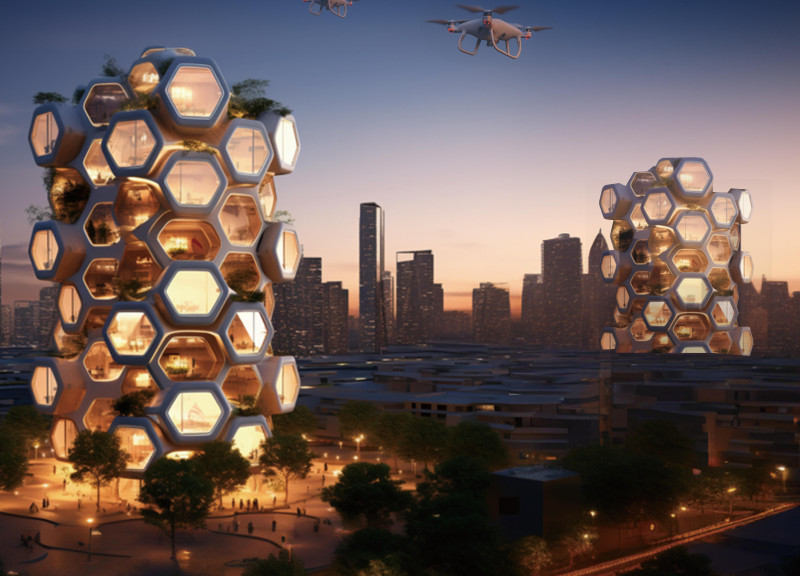5 key facts about this project
## Overview
The project is designed for the Dubai Future Home Architecture Competition, focusing on innovative and sustainable housing solutions within the rapidly urbanizing context of Dubai. The goal is to create adaptable residential units that address the individual and collective needs of residents while prioritizing ecological consciousness. The design integrates contemporary aesthetics with functional living to address the challenges posed by the local climate.
## Spatial Strategy
The architectural configuration comprises modular units arranged in hexagonal and triangular forms, promoting spatial efficiency and aesthetic appeal. Each module is designed to function independently but can also be integrated into a larger community layout, allowing for a variety of living scenarios from solitary to communal. The circular arrangement of these units enhances opportunities for social interaction among residents and encourages a sense of community.
## Material and Sustainability
Material selection plays a crucial role in the project's sustainability strategy. Key components include bamboo-based materials, recycled aluminum, and nano-wood, each chosen for their low environmental impact and performance qualities. Passive cooling strategies, rainwater harvesting systems, and solar panels further contribute to energy efficiency and resource conservation. The use of locally sourced materials throughout the design minimizes the ecological footprint while promoting an adaptive living environment responsive to Dubai's climatic conditions.
The integration of communal spaces and green areas in the surrounding landscape complements the modular units. These elements not only enhance visual aesthetics but also promote outdoor activities and social interactions, supporting a holistic approach to community living.

























































